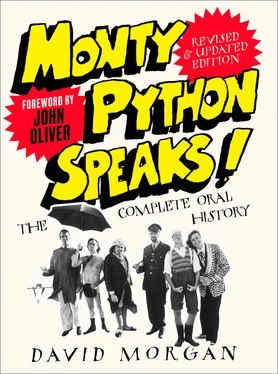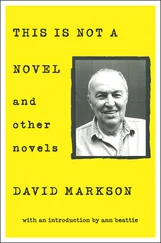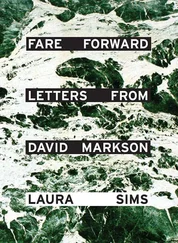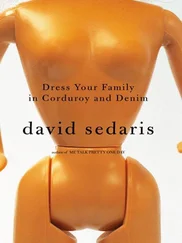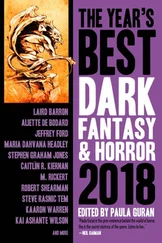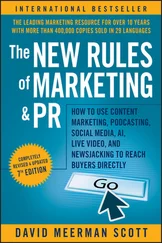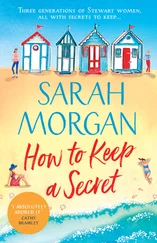Once I had my little Bolex camera, every Saturday with a three-minute roll of film we’d run out and invent a movie, depending upon what the weather was. I remember doing animation that way as well; we would go around the dustbins and get old bits of film and then we’d scratch on them, each frame, make little animated sequences; it was pathetic! But you were kind of learning something in the course of all this – anger, I think, is what I was learning, hatred for society, and wealth, and powerful people who I’ve never been able to deal with subsequently!
I spent about a year and a half in advertising in Los Angeles. My illustrating days were becoming less and less remunerative, and Joel Siegel (now the famous television critic) was an old friend, in fact the very first cartoon I ever had published was an idea by him. He was working at an ad agency and got me in because I had long hair – the agency needed a longhair in the place – so I became an art director and copywriter. The last job we had there Joel and I were doing advertisements for Universal Pictures, and we hated the job. Richard Widmark did a film called Madigan, and the kinds of things we were throwing back at Universal were: ‘Once he was happy, but now he’s MADIGAN!’
CLEESE:I’d got to know Terry Gilliam in New York a little bit. 5He turned up in England out of the blue – must have been 1966 – and I remember having lunch with him when I was doing At Last the 1948 Show . I introduced him to one or two people, including Humphrey Barclay, who was producing Do Not Adjust Your Set . So Humphrey used him on a London Weekend Television show called We Have Ways of Making You Laugh . Terry used to do little sketches, caricatures of guests appearing on the show.
How did you start with animation in England?
GILLIAM:That was just a fluke, really. When I was in London, still drawing these fucking cartoons, I was on a show doing caricatures of the guests, and they had some material they didn’t know how to present. I remembered seeing somewhere years earlier, projected on a sheet in somebody’s flat, a Stan VanDerBeek cartoon. It was the first time I’d ever seen cutout animation, and it was Richard Nixon photographed with a foot in his mouth, trying to get it out. I thought it was outrageously funny. So on the show I said, ‘Why don’t I make an animated film?’ And they let me. And overnight I was an animator.
I had two weeks to do it in, and four hundred pounds. The only way I could do it in that time was using cutouts. I just did these silly things with these cutouts and nobody had ever seen that before on British television. And the result was instantaneous; within a week I had all these offers to do all this other stuff. That’s the power of that going out there and millions of people seeing your stuff.

BIRTH CONTENTS COVER TITLE PAGE COPYRIGHT DEDICATION FOREWORD BY JOHN OLIVER INTERVIEWEES INTRODUCTION PRE-PYTHON BIRTH TAKE-OFF THE PYTHONS THROUGH THE LOOKING GLASS The Control Freak Splunge! The Nice One The Cheeky One The Zealous Fanatic The Monosyllabic Minnesota Farm Boy The Group Dynamic AND NOW FOR SOMETHING COMPLETELY … THE SAME? FEAR AND LOATHING AT THE BBC MONTY PYTHON AND THE HOLY GRAIL THE US INVASION BEGINS THE FOURTH (AND FINAL) SORTIE CAUGHT IN PYTHON’S ORBIT LIFE OF BRIAN FLYING SOLO THE MEANING OF LIFE LE MORTE D’ARTHUR THE ‘IF YOU COULD SAVE ONLY ONE THING YOU’VE PRODUCED’ CHAPTER TWENTY-FIRST-CENTURY PYTHON SPAMALOT DÉJÀ REVUE EXITING THE STAGE FINAL THOUGHTS FOOTNOTES THE PYTHON OEUVRE SOURCES BIBLIOGRAPHY INDEX ACKNOWLEDGEMENTS ABOUT THE AUTHOR ABOUT THE PUBLISHER
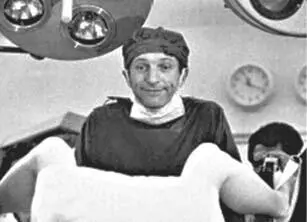
Chapman in the delivery room, from The Meaning of Life.
LEAVE IT ALL TO US, YOU’LL NEVER KNOW WHAT HIT YOU
How did the grouping of Python come about?
BARRY TOOK, BBC AND INDEPENDENT TELEVISION PRODUCER:Marty Feldman and I were sitting in an Indian restaurant. He had been working on The Frost Report with John Cleese and Graham Chapman, and I’d been working at Thames Television with Michael Palin and Terry Jones, and I said, ‘I’ll put my two Oxford chaps against your two Cambridge chaps.’ It started as a joke – hah hah hah – so I got home and I thought, ‘Hey, that’s not a bad idea.’
So I put it to Michael Palin, and he said yeah, he thought it’d be fine by him, but if it came off could he bring Gilliam and Eric Idle because they’d been working together at Thames on this children’s show, Do Not Adjust Your Set. And I took it to Cleese and Graham Chapman, and we got together and talked about it, and I went to the BBC.
CLEESE:So what happened – and I am fairly clear that my account is fundamentally right – after Graham and I had been laughing at Do Not Adjust Your Set every Thursday, we said, ‘Wouldn’t it be fun to do something with those guys, because they are the funniest people around.’ Connie had now been in England for a year and a half and had found her feet, so I didn’t feel guilty about going off to the studio for rehearsal. We rang them up – I rang them up, because when I say ‘Graham and I’ rang them up it always meant I did; Graham didn’t do that kind of thing, he’d sit there sucking on his pipe – and I suggested it to them, and they were a bit cautious. They didn’t say, ‘What a wonderful idea!’
I was told later that they’d had an offer from Thames Television, so they were making up their minds how to proceed. And then about two weeks later they rang back and said, ‘Okay, we’ve thought about it and we like the idea.’
Marty Feldman’s writing partner was Barry Took, and they’d written hundreds of very good radio shows together of which Round the Horne was the best known. Graham and I wrote a certain amount of stuff for Marty during that period when we weren’t performing, so I knew Barry a little and I’d always liked him, and I knew he was some kind of comedy advisor to the BBC. I spoke to Barry and said, ‘Look, I’ve talked to the Do Not Adjust Your Set people and we’d like to do something.’ And my partly constructed memory is that Barry said, ‘I’ll speak to someone.’
PALIN:I can remember John ringing me up and saying that he’d seen The Complete and Utter History of Britain that Terry and I did, and saying, ‘Well, you won’t be doing any more of those!’ – John’s estimation of The Complete and Utter History , which had been a partial success (or partial failure, according to which way you looked at it)!
Terry, Eric, and myself had all been contributors to The Frost Report , [but] I had worked as an actor with John and Graham on a thing called How to Irritate People which was made in 1968. I think this was the first time that I’d actually acted with John in sort of long sketches. John was pretty much a star in the television comedy world by 1968 because of The Frost Report and then At Last the 1948 Show , and I was very flattered that I was asked to go and do this show, because John was the best around – by far he was the most interesting, the most effective television comedy writer/performer around, as far as I was concerned. I think it was doing that that we realized that we enjoyed working together, we had a similar sense of humour, but also a similar attitude to comedy performing: playing it straight for laughs rather than to handle it too obviously. So that really brought John and myself together. I don’t think John had worked with Terry Jones, but he knew Terry Gilliam of course because he worked with him on that magazine in America.
Читать дальше
